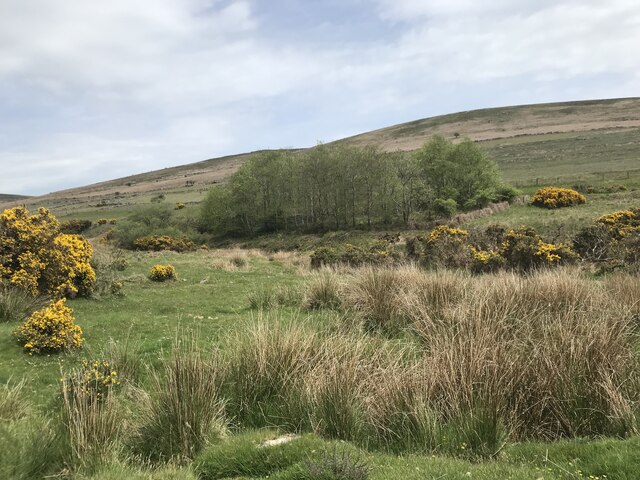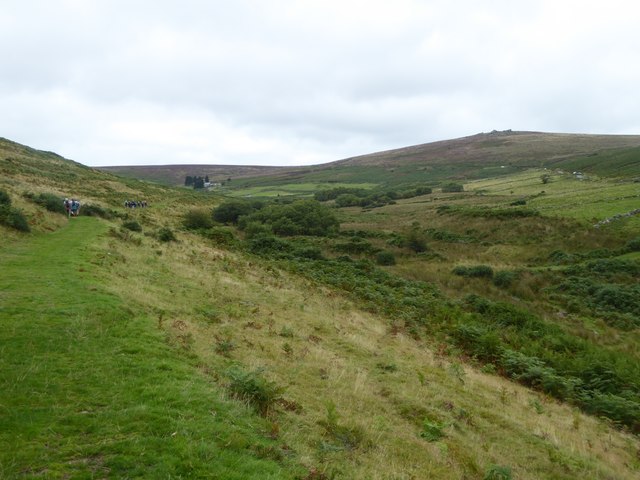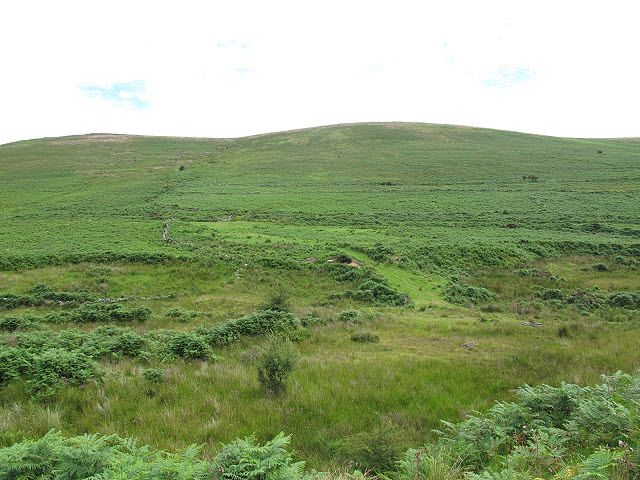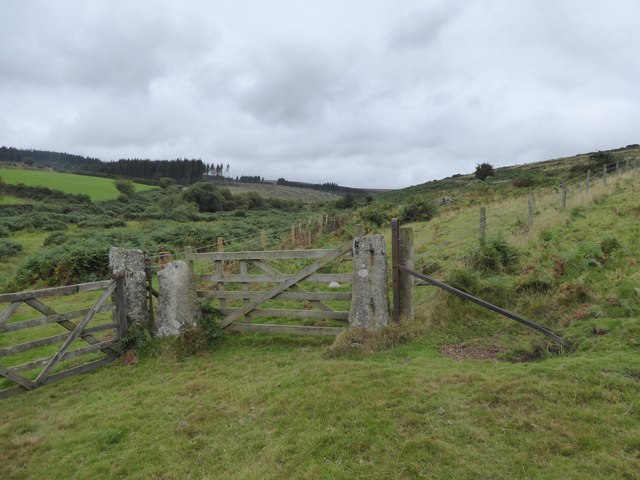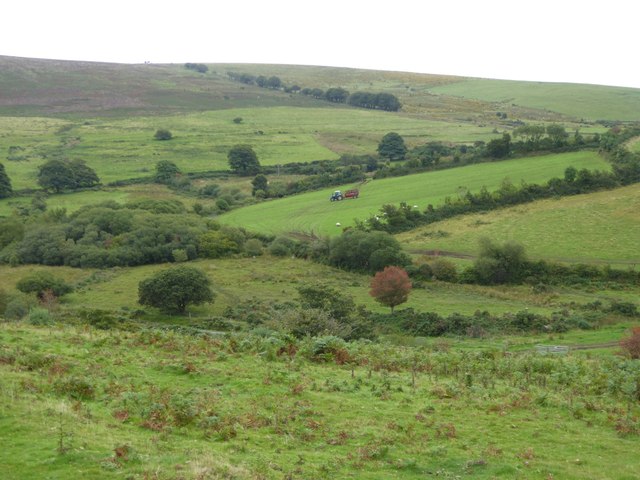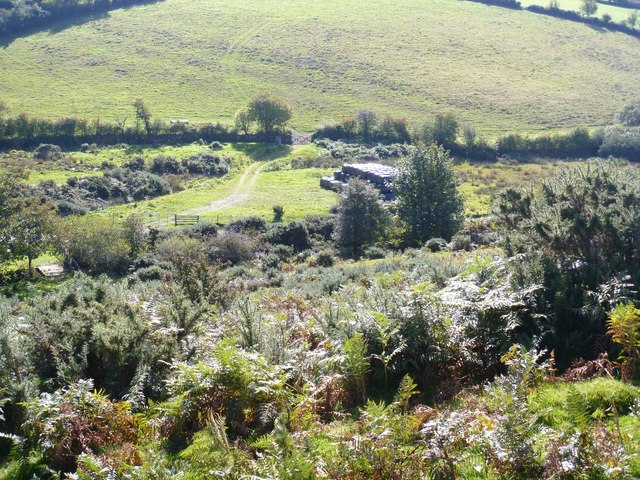Hameldown Beacon
Hill, Mountain in Devon Teignbridge
England
Hameldown Beacon
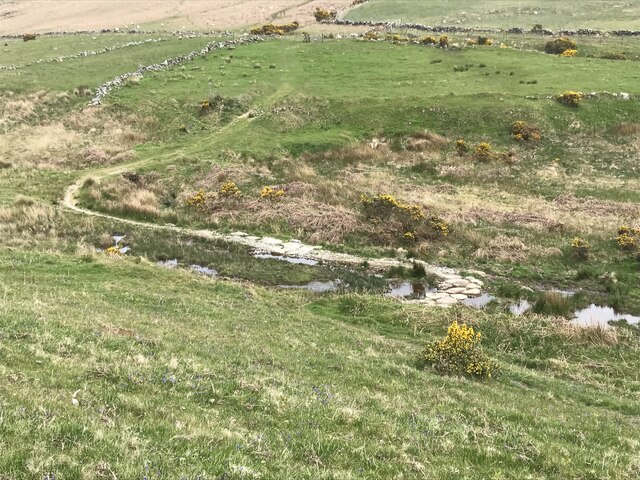
The requested URL returned error: 429 Too Many Requests
If you have any feedback on the listing, please let us know in the comments section below.
Hameldown Beacon Images
Images are sourced within 2km of 50.595598/-3.826515 or Grid Reference SX7078. Thanks to Geograph Open Source API. All images are credited.
![Valley north of Challacombe Challacombe is a farm that represents all that remains of a once much more extensive village. Settlements in the area around go back to the Bronze Age but it was busiest in medieval times when the strip or lynchet farming system was used, and the 19th century (up to 1927) when there were operational tin mines nearby. Most of the buildings are now in ruins.
The land is now part of the Duchy of Cornwall estate; in 2006 it won Silver prize in the Duke's Habitat Award which is "to encourage and recognise good conservation practices within farm management." Min Cullum of Challacombe won it by "developing the varied habitats on her farm which include unusual species such as wax caps and bog hoverfly." The farmer allows free access to anyone who wants to study the wildlife and archaeology of the farm.
[NB there are at least three villages in Devon called Challacombe, this description relates to the one near Widecombe-in-the-Moor].](https://s3.geograph.org.uk/geophotos/05/12/18/5121899_14fc8e16.jpg)
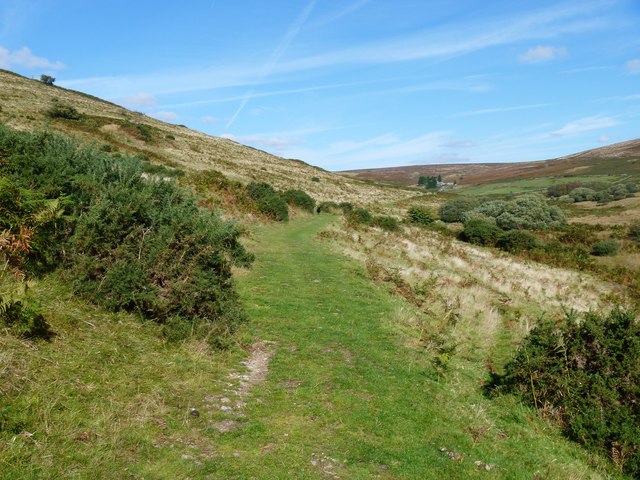
![Two tracks meeting near Challacombe Farm Challacombe is a farm that represents all that remains of a once much more extensive village. Settlements in the area around go back to the Bronze Age but it was busiest in medieval times when the strip or lynchet farming system was used, and the 19th century (up to 1927) when there were operational tin mines nearby. Most of the buildings are now in ruins.
The land is now part of the Duchy of Cornwall estate; in 2006 it won Silver prize in the Duke&#039;s Habitat Award which is &quot;to encourage and recognise good conservation practices within farm management.&quot; Min Cullum of Challacombe won it by &quot;developing the varied habitats on her farm which include unusual species such as wax caps and bog hoverfly.&quot; The farmer allows free access to anyone who wants to study the wildlife and archaeology of the farm.
[NB there are at least three villages in Devon called Challacombe, this description relates to the one near Widecombe-in-the-Moor].](https://s1.geograph.org.uk/geophotos/05/12/18/5121841_76d77814.jpg)
![Pond at Challacombe Farm Challacombe is a farm that represents all that remains of a once much more extensive village. Settlements in the area around go back to the Bronze Age but it was busiest in medieval times when the strip or lynchet farming system was used, and the 19th century (up to 1927) when there were operational tin mines nearby. Most of the buildings are now in ruins.
The land is now part of the Duchy of Cornwall estate; in 2006 it won Silver prize in the Duke&#039;s Habitat Award which is &quot;to encourage and recognise good conservation practices within farm management.&quot; Min Cullum of Challacombe won it by &quot;developing the varied habitats on her farm which include unusual species such as wax caps and bog hoverfly.&quot; The farmer allows free access to anyone who wants to study the wildlife and archaeology of the farm.
[NB there are at least three villages in Devon called Challacombe, this description relates to the one near Widecombe-in-the-Moor].](https://s2.geograph.org.uk/geophotos/05/12/18/5121846_aea4efbb.jpg)
![Information board about Challacombe Medieval Village Challacombe is a farm that represents all that remains of a once much more extensive village. Settlements in the area around go back to the Bronze Age but it was busiest in medieval times when the strip or lynchet farming system was used, and the 19th century (up to 1927) when there were operational tin mines nearby. Most of the buildings are now in ruins.
The land is now part of the Duchy of Cornwall estate; in 2006 it won Silver prize in the Duke&#039;s Habitat Award which is &quot;to encourage and recognise good conservation practices within farm management.&quot; Min Cullum of Challacombe won it by &quot;developing the varied habitats on her farm which include unusual species such as wax caps and bog hoverfly.&quot; The farmer allows free access to anyone who wants to study the wildlife and archaeology of the farm.
[NB there are at least three villages in Devon called Challacombe, this description relates to the one near Widecombe-in-the-Moor].](https://s2.geograph.org.uk/geophotos/05/12/18/5121850_ce820412.jpg)
![Ruined building at Challacombe Medieval Village Challacombe is a farm that represents all that remains of a once much more extensive village. Settlements in the area around go back to the Bronze Age but it was busiest in medieval times when the strip or lynchet farming system was used, and the 19th century (up to 1927) when there were operational tin mines nearby. Most of the buildings are now in ruins.
The land is now part of the Duchy of Cornwall estate; in 2006 it won Silver prize in the Duke&#039;s Habitat Award which is &quot;to encourage and recognise good conservation practices within farm management.&quot; Min Cullum of Challacombe won it by &quot;developing the varied habitats on her farm which include unusual species such as wax caps and bog hoverfly.&quot; The farmer allows free access to anyone who wants to study the wildlife and archaeology of the farm.
[NB there are at least three villages in Devon called Challacombe, this description relates to the one near Widecombe-in-the-Moor].](https://s0.geograph.org.uk/geophotos/05/12/18/5121852_445bffde.jpg)
![Granite walls for a field at Challacombe Farm Challacombe is a farm that represents all that remains of a once much more extensive village. Settlements in the area around go back to the Bronze Age but it was busiest in medieval times when the strip or lynchet farming system was used, and the 19th century (up to 1927) when there were operational tin mines nearby. Most of the buildings are now in ruins.
The land is now part of the Duchy of Cornwall estate; in 2006 it won Silver prize in the Duke&#039;s Habitat Award which is &quot;to encourage and recognise good conservation practices within farm management.&quot; Min Cullum of Challacombe won it by &quot;developing the varied habitats on her farm which include unusual species such as wax caps and bog hoverfly.&quot; The farmer allows free access to anyone who wants to study the wildlife and archaeology of the farm.
[NB there are at least three villages in Devon called Challacombe, this description relates to the one near Widecombe-in-the-Moor].](https://s1.geograph.org.uk/geophotos/05/12/18/5121861_aac8d248.jpg)
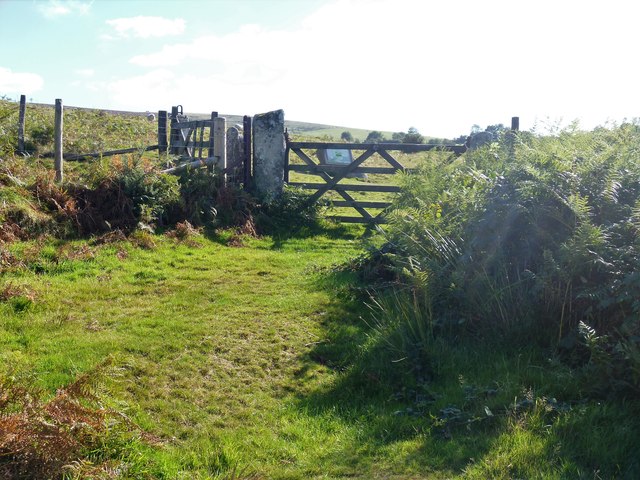
![Welcome to Challacombe Farm [1] Alongside the bridleway is this information board giving details of the farm. See <span class="nowrap"><a title="https://www.dartmoorfarm.com/" rel="nofollow ugc noopener" href="https://www.dartmoorfarm.com/">Link</a><img style="margin-left:2px;" alt="External link" title="External link - shift click to open in new window" src="https://s1.geograph.org.uk/img/external.png" width="10" height="10"/></span>](https://s1.geograph.org.uk/geophotos/05/93/58/5935849_ac6b23f9.jpg)
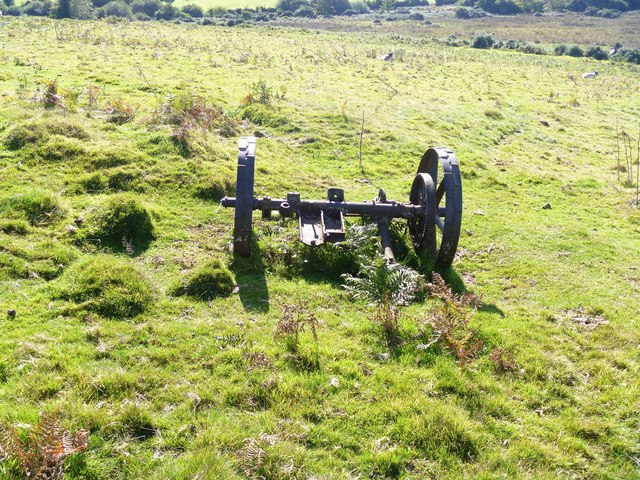
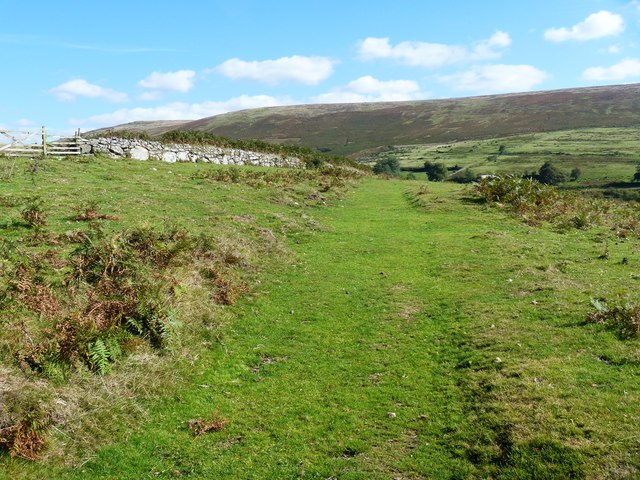
Hameldown Beacon is located at Grid Ref: SX7078 (Lat: 50.595598, Lng: -3.826515)
Administrative County: Devon
District: Teignbridge
Police Authority: Devon and Cornwall
What 3 Words
///teams.hockey.atom. Near Moretonhampstead, Devon
Nearby Locations
Related Wikis
Grimspound
Grimspound is a late Bronze Age settlement, situated on Dartmoor in Devon, England. It consists of a set of 24 hut circles surrounded by a low stone wall...
The Great Thunderstorm
The Great Thunderstorm of Widecombe-in-the-Moor in Dartmoor, Kingdom of England, took place on Sunday, 21 October 1638, when the church of St Pancras was...
Church of Saint Pancras, Widecombe-in-the-Moor
The Church of Saint Pancras is a Church of England church in Widecombe-in-the-Moor, Devon, England. It is also known as the Cathedral of the Moor. The...
Widecombe in the Moor
Widecombe in the Moor () is a village and large civil parish in Dartmoor National Park in Devon, England. Its church is known as the Cathedral of the Moors...
Nearby Amenities
Located within 500m of 50.595598,-3.826515Have you been to Hameldown Beacon?
Leave your review of Hameldown Beacon below (or comments, questions and feedback).
